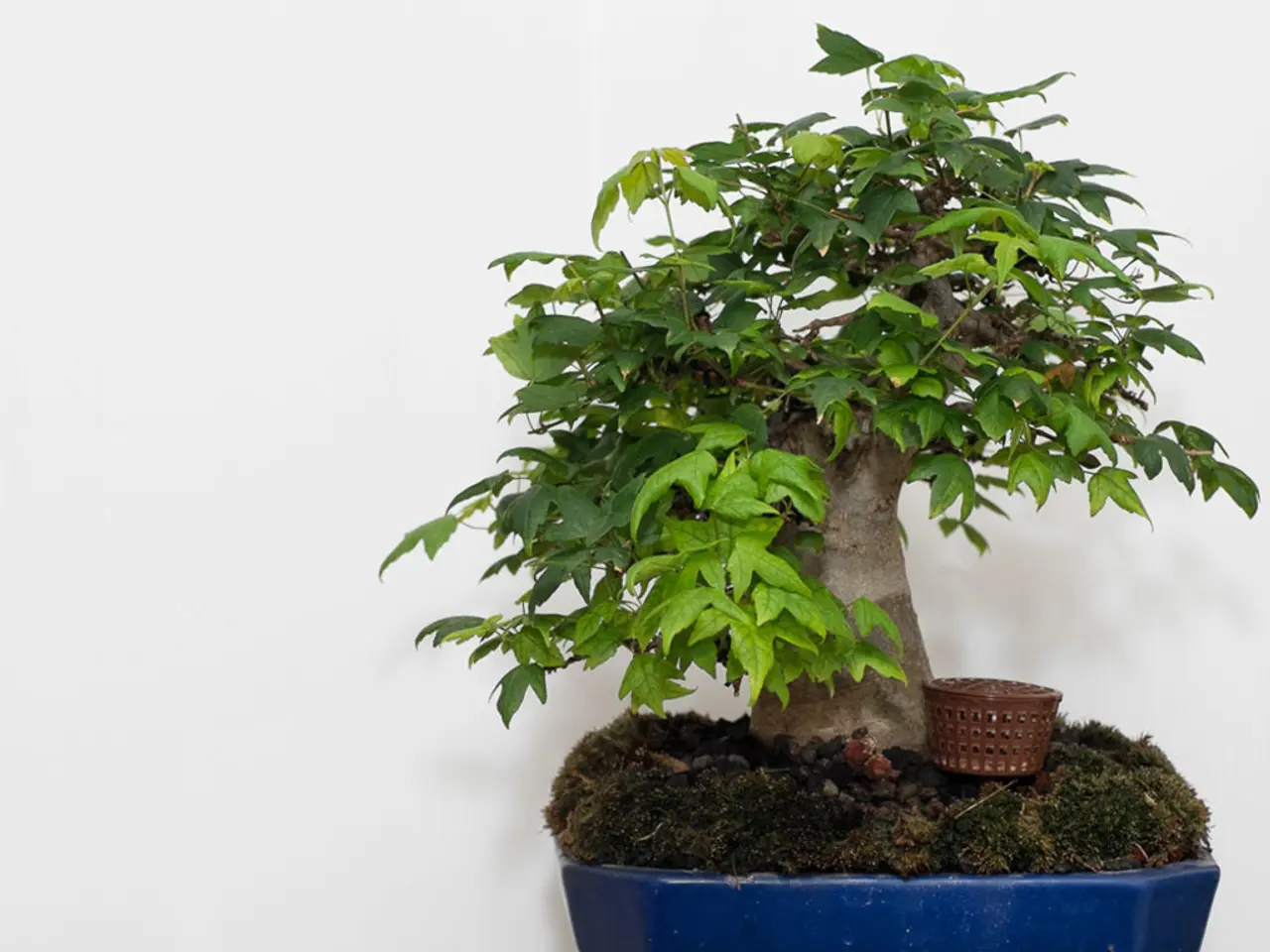Bonsai Mastery: Cultivating Discriminating Taste & In-depth Knowledge
Bonsai, the art of growing miniature trees, requires a delicate balance between aesthetics and care. Here's a guide to help you create visually appealing bonsai pieces that appreciate both traditional and modern aesthetics.
Understanding Balance in Bonsai
Balance in bonsai design refers to the distribution of visual elements such as branches, leaves, and trunk. There are three types of balance: symmetrical, asymmetrical, and radial. To achieve balance:
- Symmetry: Use formal upright styles like Chokkan, where the trunk is straight and branches are evenly spaced to create a perfectly balanced look.
- Asymmetry: Play with the placement of branches and foliage to create a visually appealing asymmetry. This can include styles like the Informal Upright or the Cascade, where branches are placed in a way that creates dynamic movement.
Achieving Asymmetry
Asymmetry in bonsai design creates a sense of movement and organic growth. To achieve effective asymmetry:
- Visual Flow: Direct the viewer's eye through the bonsai by creating a visual flow that guides attention from one point to another. This can be achieved by placing branches in a way that leads the eye up the tree or around it.
- Negative Space: Use negative space effectively to create a sense of balance and harmony. This space gives the bonsai room to breathe and allows the viewer's eye to rest.
Tips for Critical Eye Appreciation
To ensure your bonsai is appreciated by a critical eye, consider the following:
- Harmony with Nature: Bonsai should evoke a sense of natural harmony. Use elements like rocks, moss, or a small water feature to create a setting that complements the tree.
- Attention to Detail: Pay attention to the smallest details, such as the shape of the pot, the placement of roots, and the texture of foliage. All these elements contribute to the overall aesthetic impact of the bonsai.
- Evolution Over Time: Recognize that bonsai is a living work of art. Be prepared to make adjustments over time as the tree grows and evolves.
Practical Techniques
Wiring and Pruning: Use wire to shape branches and achieve the desired form. Prune regularly to maintain the tree's shape and promote healthy growth.
Lighting and Display: Use appropriate lighting to highlight the bonsai's features. Outdoor lighting can enhance the tree's structure at night, creating a dramatic effect.
By balancing symmetry and asymmetry and paying attention to these details, you can create bonsai designs that are both harmonious and visually striking, appealing to even the most discerning eye.
Incorporating Deadwood and Choosing the Right Pot
The strategic incorporation of deadwood features requires a deep understanding of the tree's narrative, as well as the artistry to balance aesthetics with the natural imperfections of the tree.
The pot's color, proportion, and style should complement the tree's foliage and bark, creating a sense of harmony and balance.
Ideal Humidity Levels and Seasonal Care
Ideal humidity levels for bonsai trees range from 40-60%, with some species tolerating higher or lower levels. To care for a bonsai tree, adjust your routine according to seasonal changes, watering and fertilizing more frequently during spring and summer, reducing watering in autumn, and protecting from extreme temperatures and frost in winter.
In refining the foliage pad, bonsai artists employ pinching and pruning techniques to further manipulate leaf density, creating a more intricate balance between dense and airy areas.
By understanding and applying these principles, you can create bonsai designs that are truly masterpieces, evoking a sense of calm and contemplation in the viewer.
[1] Bonsai4me
[2] Bonsai Tonight
[3] Bonsai Empire
[4] Bonsai Today
[5] Bonsai Tonight
- For individuals interested in expanding their home-and-garden hobbies, consider venturing into home-and-garden projects that involve gardening andFocusing on the art form of bonsai, you can create miniature, visually striking trees that showcase both traditional and modern lifestyles.
- Alongside implementing practical techniques such as wiring, pruning, and lighting, carefully selecting a pot for your bonsai can contribute to an overall balanced and harmonious lifestyle, both for the tree and those who appreciate it.




